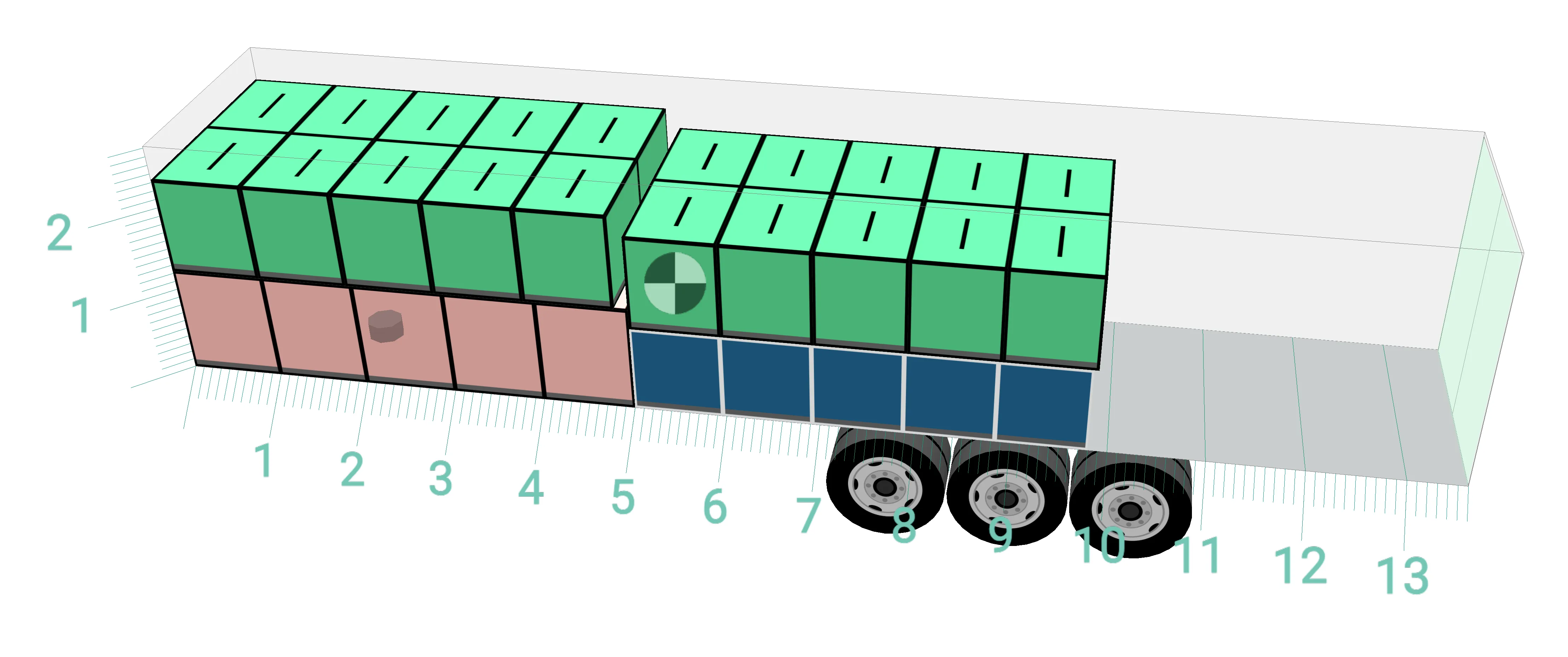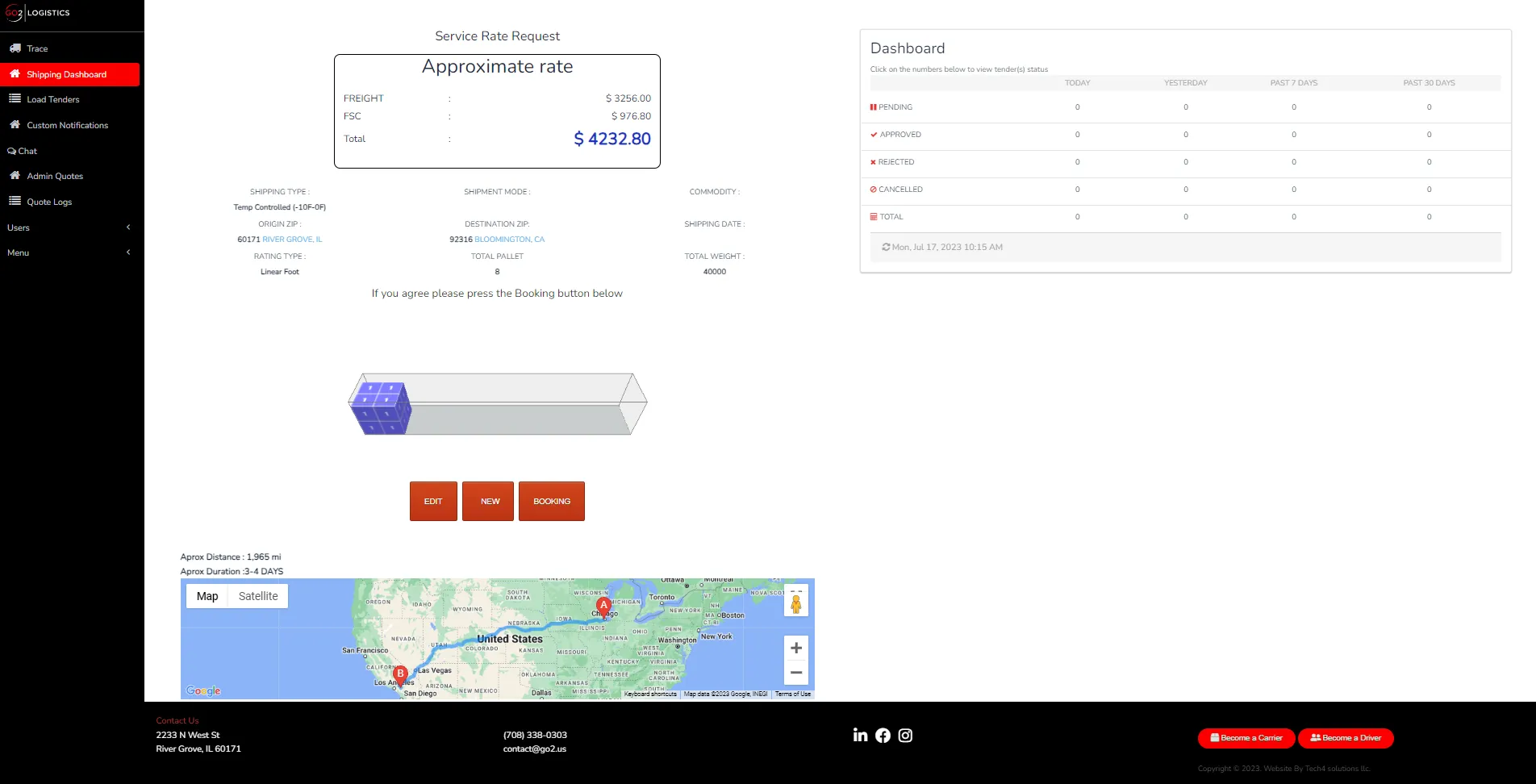How Go2 Logistics uses Cargo-Planner

Jonatan Persson
Software Engineer
Go2 Logistics is an American asset based carrier located in River Grove, Illinois that offers various services such as Less than Truckload, Temp controlled, Specialized Brokerage and Expedited Shipping. Earlier this year we were approached by Adrian Szuster with an interesting challenge.
They were about to develop their new automated shipping portal where their customers could easily rate, book and trace shipments. As they offer Less Than Truckload services, one crucial metric is to calculate the correct Linear Feet for the cargoes to be shipped, which in turn dictates the chargeable rate. The idea was that the customer would simply upload the cargo dimensions and then quickly be presented with a quote.
Linear feet and meters
Calculating Linear Feet of a truck, or loading meters is a very common metric used by trucking companies worldwide. These measurements are particularly important for trucking companies and logistics providers to efficiently plan and optimize their shipping operations.
Linear feet, also known as lineal feet or simply “feet,” is a unit of length that measures the length of cargo space along the floor of a truck or trailer. It represents the distance from the front to the rear of the loading area. Trucking companies use linear feet to calculate how much cargo can fit in a given truck or trailer. For instance, if a truck has 40 linear feet of cargo space, it can accommodate cargo that measures up to 40 feet in length without any gaps.

Loading meters are a similar concept but are more commonly used in Europe and other parts of the world that follow the metric system. One loading meter is equal to one meter (approximately 3.28 feet) of cargo space along the floor of the truck or trailer. Like linear feet, loading meters help determine the amount of cargo that can be loaded onto a vehicle. For example, if a truck has 10 loading meters of cargo space, it can accommodate cargo that measures up to 10 meters in length without any gaps. Trucking companies use these measurements to ensure that they maximize the use of available space while complying with weight and size restrictions imposed by local transportation regulations. It helps them plan the arrangement and stacking of cargo to optimize the use of space and ensure safe and efficient transportation.
When dealing with different types of cargo, some items may not take up the full width of the trailer, while others might require additional space due to their shape or handling requirements. As a result, it’s essential for trucking companies to consider the nature of the cargo and make appropriate arrangements to make the best use of available space.
Cargo-Planner has since long presented the users with loading meters, but when talking to Adrian and his team we also learned that it is not always as simple as we thought, namely if the cargo occupies only half the width of the truck, only half its length should be taken into consideration.
The solution
We sat down to see how we could tackle this challenge. We came to the conclusion that it should be easy and straight forward for the user to fetch these metrics as part of a calculation.
Soon we released a new flag to our calculation API which means a user in one single API call can get hold of:
- Number of trucks needed
- Utilization in terms of weight and volume
- Linear feet for each truck
- Images of each truck
In just a few seconds, you’ll have the result ready to embed anywhere.
The result
So how did it go? Go2 Logistics just launched their portal.
 Many thousands of calculations are now being delivered to the customer portal on a monthly basis.
Many thousands of calculations are now being delivered to the customer portal on a monthly basis.
Do you also want to provide your customers with load planning functionalities? Please get in touch with us here.